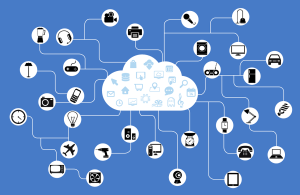By Eric A. Coop

Ever been mad while stuck at a traffic light? Traffic conditions are light, but the light is timed, or the embedded sensor is not working correctly. Or have you been frustrated to find your smartphone traffic apps giving erroneous information and guiding you to your destination late? Or how about trying to create a smart home only to run up against compatibility/Interoperability roadblocks?
Sixth Generation wireless, or 6G, which is under development with a projected rollout in 2030, promises to resolve these annoying everyday issues but, more importantly, to fundamentally transform industry, emergency services, agriculture, global communications, artificial intelligence (AI), machine learning, climate change modelling, and the conduct of warfare.
The scenarios in the first paragraph involve the Internet of Things (IoT). At the most-basic level, IoT is a network of smart devices (e.g., phones, alarms, central heating, air, and even refrigerators) outfitted with various sensors and in communication with each other, often via a home’s wireless router. A properly configured smart home enables the occupants to monitor individual home systems from anywhere in the world, provided they have a connection to their mobile device or laptop.
While IoT is a concept that enjoys rising popularity, steady movement toward an Internet of Everything (IoE) is already occurring. While IoT involves connecting physical objects, IoE will focus not only on things, but also on people, data, and processes. Among emerging IoE technologies is Vehicle-to-Everything (V2X), which promises to resolve the traffic light situation above by enabling vehicles to communicate with traffic control devices. The concept of Smart Cities more broadly is an emerging idea with great promise.
Imagine living in a city with self-driving taxis, efficient traffic flows, reliable infrastructure, reduced air pollution, smart agriculture, renewable energy/smart grids, and higher quality of life. All of this could be possible in the 6G era, driven by integration of new spectrum technologies, including tiny printed multiple-input multiple-output antennas embedded in everything and operating in terahertz spectrum (i.e., high-speed data rates inside the home) along with AI-machine learning integration, which could allow automated systems to learn how to work efficiently and identify areas for preventive maintenance to reduce downtimes.
While all this sounds great, the history of wireless networks is filled with similar “future-of-tomorrow-today” promises that have often fallen short or resulted in unanticipated problems, including around data security. 5G, since its introduction in 2019, has been unprofitable and has seen a declining average revenue per user (ARPU). Simultaneously, the friction between development costs, corporate profit motivations, and politics is a barrier to FCC efforts to achieve the widespread broadband access necessary to support widespread IoT/IoE. Additionally, standards for communication protocols, system integration, compatibility, and security have yet to be established.
To achieve 6G and a robust IoT/IoE in 2030, many engineering and policy issues must be resolved. Practically speaking, 6G requires far more spectrum in an already crowded spectrum environment. A highly contested spectrum environment is bound to become even more contentious, and involves many stakeholders, including telecommunications companies, municipal government entities, medicine, agriculture, federal agencies, and more. FTI advises an array of sophisticated clients on telecommunications and spectrum issues, and has the experience and expertise to help your company chart a course into the IoT/IoE future.
The views and opinions expressed in this blog post are those of the writer and do not necessarily reflect the views or positions of any entities they represent.
